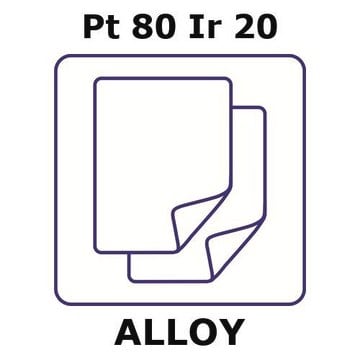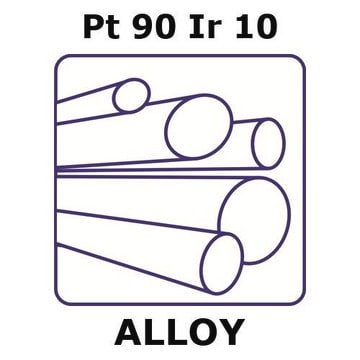GF57333573
Silver
rod, 100mm, diameter 8.0mm, as drawn, 99.95+%
Synonym(s):
Silver, AG007938
Sign Into View Organizational & Contract Pricing
All Photos(2)
About This Item
Linear Formula:
Ag
CAS Number:
Molecular Weight:
107.87
MDL number:
UNSPSC Code:
12141740
PubChem Substance ID:
NACRES:
NA.23
Recommended Products
assay
99.95%
form
rod
manufacturer/tradename
Goodfellow 573-335-73
resistivity
1.59 μΩ-cm, 20°C
L × diam.
100 mm × 8 mm
bp
2212 °C (lit.)
mp
960 °C (lit.)
density
10.49 g/cm3 (lit.)
SMILES string
[Ag]
InChI
1S/Ag
InChI key
BQCADISMDOOEFD-UHFFFAOYSA-N
General description
For updated SDS information please visit www.goodfellow.com.
Legal Information
Product of Goodfellow
Storage Class
13 - Non Combustible Solids
wgk_germany
WGK 3
flash_point_f
Not applicable
flash_point_c
Not applicable
Certificates of Analysis (COA)
Search for Certificates of Analysis (COA) by entering the products Lot/Batch Number. Lot and Batch Numbers can be found on a product’s label following the words ‘Lot’ or ‘Batch’.
Already Own This Product?
Find documentation for the products that you have recently purchased in the Document Library.
S R Mueller-Spitz et al.
Letters in applied microbiology, 58(4), 330-337 (2013-11-30)
Polycyclic aromatic hydrocarbons (PAH) are a common environmental contaminant originating from both anthropogenic and natural sources. Mycobacterium species are highly adapted to utilizing a variety of PAH. Silver nanoparticles (AgNP) are an emerging contaminant that possess bactericidal properties, interferes with
Yu Sun et al.
Journal of nanoscience and nanotechnology, 14(6), 4481-4485 (2014-04-18)
The fluorescence enhancement effect of Rh6G molecules deposited on the silver film substrate decorated with nanohole arrays was investigated in this paper. The prepared substrate, decorated with nanohole arrays, was fabricated with the deposition of silver films onto the anodic
Dawei Guo et al.
Journal of biomedical nanotechnology, 10(4), 669-678 (2014-04-17)
Several studies have suggested that silver nanoparticles (AgNPs) have the potential to treat human cancers, including leukemia. However, the detailed cellular mechanisms for AgNPs to inhibit the growth of leukemic cells and their efficacy on clinical isolates of leukemic patients
Cheng-Kuan Su et al.
Toxicology letters, 227(2), 84-90 (2014-04-08)
With the increasing prevalence of silver nanoparticles (AgNPs) in various products, whether such AgNPs will introduce new injury mechanisms from new pathologies remains to be determined. From the toxicokinetic viewpoint, it is vital to have in-depth knowledge of their in
Hajo Haase et al.
Journal of biomedical nanotechnology, 10(6), 1146-1156 (2014-04-23)
Silver is commonly used as an antibacterial agent, e.g., in various medical applications, and the availability of silver nanoparticles (AgNP) has fueled this development. Their antibacterial properties are well defined, whereas there are concerns regarding unknown and potentially harmful effects
Our team of scientists has experience in all areas of research including Life Science, Material Science, Chemical Synthesis, Chromatography, Analytical and many others.
Contact Technical Service





